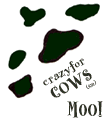|
|
|
|
|
|
|
Cheese Part 2:
- Cheese varies according to the control of several factors: the type of milk and
how it is treated, the adjustment of the fat content, and heating or pasteurizing.
- Cheese is also modified through the addition of enzymes or cultures of bacteria, molds, or yeasts.
- How quickly the curd is formed depends upon the temperature, how much whey is removed and how
fast it is removed, and how much rennin and acid is added.
- Before ripening, cheese is called fresh or green; after ripening it is called cured, aged, or ripened.
- Ripening happens because of of biological and chemical changes in the cheese.
- The moisture content, acidity, texture, shape, size, and presence microorganisms all impact the
curing of the cheese.
- The biological and chemical changes modify the consistency as well as the flavor of the cheese.
- The chemical changes include the breakdown of fats to fatty acids and of proteins to amino acids,
and lactose (milk sugar) to lactic, acetic, and propionic acids, diacetyl, and carbon dioxide.
- Cheese making has been an important part business in The Netherlands, France, Italy, and
Switzerland for centuries.
Source: "http://www.britanica.com, Entry Cheese.
|
|



